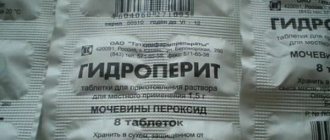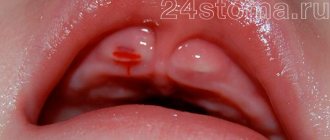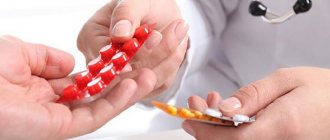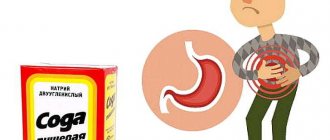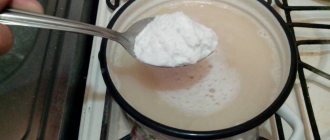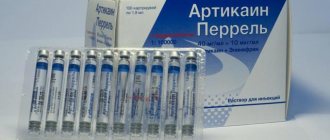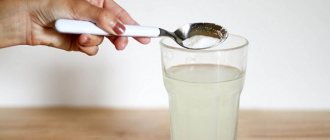28.10.2019
Before the advent of painkillers, tooth extraction was painful. Even at the beginning of the 20th century, such operations were performed without anesthesia. Nowadays dentistry uses many methods and a variety of drugs that make it possible to remove teeth absolutely painlessly. This helps to avoid discomfort and complications. After all, doctors choose drugs individually, depending on the patient’s health condition and the characteristics of the surgical intervention. An anesthetic is used for tooth extraction, treatment of pulpitis, periodontitis, implantation and other dental procedures.
What are the main advantages of this drug?
One of the important advantages over other anesthetics is its prolonged action. In this case, the effect occurs almost immediately - within 1-3 minutes after administration of the solution. As for how long it lasts, the analgesic effect lasts for 45 minutes. The active substances are quickly processed by the body and are almost completely eliminated through the liver and kidneys. Another important advantage of this anesthetic is the minimal number of contraindications to its use.
The composition contains components such as articaine, epinephrine and sodium sulfate, and some patients may have individual hypersensitivity to these substances. In this case, you will have to choose an alternative pain reliever. The composition also contains synthetic adrenaline, but in a small concentration, so its effect on the cardiovascular system will be minimal.
The effect occurs almost immediately – within 1-3 minutes
For a long time, Ultracaine occupied the leading position among all anesthetics, but currently it has faded into the background, giving way to drugs based on articaine. Therefore, answering the question of what is stronger – “Ubistezin” or “Ultracain”, it is worth recognizing that the latter is inferior in effectiveness.
“Since childhood, I have been terribly afraid to have my teeth treated. The anesthesia always took hold very weakly; I still felt everything. And then one day I came to treat deep caries, and it turned out that the nerve needed to be removed. The doctor calmed me down for a long time, said that we would carry out the procedure under Ubistezin, that the drug was very good, powerful, and I would not feel anything. And I didn’t deceive you! The removal went very smoothly, and I really didn’t feel anything. When I realized that the dentist was almost finished, I almost cried with happiness! I remembered this name and now I always insist on this particular anesthesia.”
Lyudmila, from correspondence on the forum www.32top.ru
The product is available in two forms: “Ubistezin” with a concentration of epinephrine 1:200,000 and “Ubistezin forte” with a concentration of the same active substance in a ratio of 1:100,000. The drug is used in dental treatment and practically any dental procedures. However, due to dosage limitations, it is not recommended for major and long-term surgery.
Why is adrenaline needed in anesthesia?
Adrenaline is a vasoconstrictor - a substance that narrows blood vessels. Therefore, on the one hand, its presence in the drug provides a longer-lasting analgesic effect, and on the other hand, it reduces the risk of bleeding during dental procedures (for example, during tooth extraction).
Given this, dentists always warn patients that anesthesia without epinephrine in dentistry has a shorter lasting effect and is not suitable for long procedures. In cases where the patient is indicated for pain relief using non-adrenaline anesthetics, treatment must be carried out very quickly or divided into stages so that the doctor has the opportunity to provide anesthesia before each subsequent stage of manipulation.
If you have a problem similar to that described in this article, be sure to contact our specialists. Don't diagnose yourself!
Why you should call us now:
- We will answer all your questions in 3 minutes
- Free consultation
- The average work experience of doctors is 12 years
- Convenient location of clinics
Single contact phone number: +7
Make an appointment
Key characteristics, scope of application and dosage
So, “Ubistezin” is a transparent liquid, colorless and odorless. The solution is stored in disposable 1.7 ml ampoules. The amount of the drug administered directly depends on the purpose of its use:
- removal of teeth on the upper jaw (1-2 units) – 1.7 ml,
- palate preparation and suturing – 0.1 ml,
- removal of chewing teeth of the lower jaw – 1.7 ml,
- treatment of chewing teeth and their canals – 1.7 ml,
- treatment of caries and turning for installation of a crown – 0.5-1.7 ml,
- mandibular anesthesia – 1.7 ml.
The drug is a clear, colorless and odorless liquid.
The above dosages are advisory in nature - they are indicated in the instructions for use of "Ubistezin". However, the doctor can independently adjust the volume of the injected solution, based on the complexity of the clinical case and the individual characteristics of the patient’s body. The standard dosage for dental procedures is 1.7 ml.
Solution for injection Ubistezin (Ubistesine)
Instructions for medical use of the drug
Description of pharmacological action
A combined agent, the effect of which is determined by the components included in its composition; has a local anesthetic effect. Epinephrine, causing vasoconstriction at the injection site, complicates its absorption and prolongs its effect. The onset of the effect is 0.5-3 minutes, the duration of action is 45 minutes.
Indications for use
Infiltration and conduction anesthesia (including in dentistry - tooth extraction, filling a cavity, grinding teeth for crowns).
Release form
Solution for injection 40 mg + 5 μg/ml; cartridge 1.7 ml can (jar) tin 50.
Contraindications for use
Hypersensitivity, B12-deficiency anemia, methemoglobinemia, paroxysmal ventricular tachycardia, atrial fibrillation, closed-angle glaucoma, hypoxia, intolerance to sulfo groups (especially in bronchial asthma). Carefully. Cholinesterase deficiency, renal failure, bronchial asthma, diabetes mellitus, hyperthyroidism, arterial hypertension, children's age (up to 4 years - effectiveness and safety have not been determined). When performing paracerebral blockade - preeclampsia, bleeding in the last trimester, amnionitis.
Side effects
From the side of the central nervous system (depending on the dose applied): headache, impaired consciousness (up to loss of consciousness); breathing disorders (up to apnea); tremor, muscle twitching, convulsions. From the digestive system: nausea, vomiting, diarrhea. From the sense organ: rarely - transient visual impairment (up to blindness), diplopia. From the cardiovascular system: decreased blood pressure, tachycardia, bradycardia, arrhythmia. Allergic reactions: hyperemia and itching of the skin, conjunctivitis, rhinitis, angioedema of varying severity (including swelling of the upper and/or lower lip and/or cheeks, glottis with difficulty swallowing, urticaria, difficulty breathing), anaphylactic shock. Local reactions: swelling or inflammation at the injection site, the appearance of ischemic zones at the injection site (up to the development of tissue necrosis - in case of accidental intravascular injection); nerve damage (up to the development of paralysis) - occurs only when the injection technique is violated.
Directions for use and doses
Infiltration anesthesia: tonsillectomy (for each tonsil) - 5–10 ml; reduction of fractures - 5–20 ml; perineal suture - 5–15 ml. Conduction anesthesia: Oberst anesthesia - 2-4 ml, retrobulbar - 1-2 ml, intercostal - 2-4 ml (for each segment), paravertebral - 5-10 ml, peridural (epidural) - 10-30 ml, sacral - 10-30 ml, trigeminal nerve block - 1-5 ml, stellate ganglion block - 5-10 ml, brachial plexus block - 10-30 ml (supraclavicular or axillary access), block of the external genitalia - 7-10 ml (for each side), paracervical blockade - 6–10 ml (on each side). For uncomplicated extraction of maxillary teeth in the non-inflammatory stage, 1.7 ml per tooth is injected under the mucous membrane in the area of the transitional fold - the vestibular depot, if necessary - an additional 1-1.7 ml; palatal incision or suture - palatal depot 0.1 ml. When removing premolars of the lower jaw (5–5) in an uncomplicated stage, infiltration anesthesia gives the effect of conduction anesthesia. When preparing cavities and grinding teeth for crowns, with the exception of molars of the lower jaw, a vestibular injection of 0.5–1.7 ml per tooth. The maximum dose is 7 mg/kg.
Overdose
Symptoms: dizziness, motor agitation, loss of consciousness, decreased blood pressure, tachycardia, bradycardia. Treatment: when the first signs of an overdose appear during injection, it is necessary to stop administering the drug, place the patient in a horizontal position, ensure an open airway, and monitor heart rate and blood pressure. For dyspnea, apnea - oxygen, endotracheal intubation, mechanical ventilation (central analeptics are contraindicated); for convulsions - slow intravenous short-acting barbiturates with simultaneous oxygen supply and hemodynamic control; in case of severe circulatory disorders and shock - intravenous infusion of solutions of electrolytes and plasma substitutes, corticosteroids, albumin; for vascular collapse and increasing bradycardia - epinephrine 0.1 mg slowly intravenously, then intravenously by drip under the control of heart rate and blood pressure; for severe tachycardia and tachyarrhythmia - IV beta-blockers (selective); with increased blood pressure - peripheral vasodilators. Oxygen therapy and monitoring of blood circulation are necessary in all cases.
Interactions with other drugs
Tricyclic antidepressants and MAO inhibitors enhance the hypertensive effect. The local anesthetic effect of articaine is enhanced and prolonged by vasoconstrictor drugs. Non-selective beta-blockers increase the risk of developing a hypertensive crisis and severe bradycardia.
Best before date
24 months
ATX classification:
N Nervous system
N01 Anesthetics
N01B Preparations for local anesthesia
N01BB Amides
N01BB58 Articaine in combination with other drugs
Pharmacological properties
The effect of the solution is determined by the properties of the active components included in its composition. This is an anesthetic based on articaine (40 mg) and epinephrine (0.006 mg). Together, these substances provide a stable and long-lasting analgesic effect. Let's look at each of the components in a little more detail:
- articaine is an amide-type anesthetic substance that blocks sodium channels and reduces the sensitivity of nerve fibers to a minimum threshold,
- Epinephrine is an adrenomimetic that promotes vasoconstriction and slows down the absorption of articaine, which guarantees its longer action.
This is an anesthetic based on articaine and epinephrine.
Due to the low concentration of active substances in the blood plasma, the drug has virtually no effect on the functioning of the cardiovascular system. Its use is acceptable for people with certain heart diseases, as well as for children under 4 years of age and women during pregnancy.
Main indications for use
As mentioned above, the drug has found wide use in dental practice. Among the main indications for its use, experts highlight the following manipulations:
- caries treatment and filling,
- tooth extraction,
- cleaning and filling of canals,
- preparation of the stump before prosthetics,
- making incisions and suturing in the palate,
- flap operations and manipulation of bone tissue.
The drug can be used in dental treatment.
The instructions for the drug indicate that it is suitable, among other things, for patients with certain somatic diseases, as well as for those who are prone to allergic reactions and problems with the cardiovascular system. In any case, the choice in favor of one or another anesthetic will be made by a specialist, based on the nuances of the clinical picture and the individual characteristics of the patient’s body.
Indications and features of use
Local anesthesia without adrenaline in dentistry is used in the following situations:
- If the patient has high blood pressure or cardiac dysfunction (heart disease, heart rhythm disturbances, failure, etc.). Moreover, for moderate hypertension, anesthetics with a reduced concentration of adrenaline are recommended; for severe hypertension, anesthetics with its complete absence are recommended.
- For dental treatment of children under 5 years of age.
- Women during pregnancy and lactation. Experts still recommend using drugs containing low concentrations of adrenaline so that the anesthetic is absorbed into the blood more slowly and does not penetrate the hematoplacental barrier.
- When treating patients with pathologies of the endocrine system, including those due to age (menopause in women) and those requiring thyroid hormone replacement therapy.
- Women during menstruation.
- Patients who are likely to develop adverse reactions: against the background of stress, while taking antidepressants or drugs that block beta-adrenergic receptors (some drugs to lower blood pressure and certain heart medications).
If the patient has one of these conditions or there is a suspicion that an adverse reaction to the anesthetic may develop, be sure to warn the dentist about this before starting treatment.
In what cases is the drug contraindicated?
Before using the solution, it is important to make sure that the patient has no contraindications to it. Among the restrictions on the use of Ubistezin, experts identify the following phenomena and conditions:
- severe liver failure,
- hemorrhagic diathesis,
- hypertrichosis,
- angle-closure glaucoma,
- serious diseases of the cardiovascular system, for example, post-infarction condition,
- bronchial asthma,
- epilepsy,
- bleeding disorders,
- diabetes,
- age up to 4 years.
Before using the solution, it is important to make sure there are no contraindications.
The problem is that the patient may not know that he is allergic to the active ingredients included in the composition. Therefore, in order to exclude the patient’s sensitivity to the components of the drug, the doctor may suggest undergoing an allergy test.
Ubistezin forte 40mg+10mcg/ml 1.7ml 50 pcs. injection
pharmachologic effect
The combined drug has a local anesthetic effect.
Articaine is a local anesthetic of the amide type of the thiaphene series. The mechanism of action is due to the stabilization of neuronal membranes and the prevention of the occurrence and conduction of a nerve impulse.
Epinephrine is an adrenergic agonist. Causes vasoconstriction at the injection site, which complicates the absorption of articaine and prolongs the effect of the local anesthetic effect.
The onset of the effect is 0.5-3 minutes, the duration of action is 45 minutes.
Composition and release form Ubistezin forte 40 mg + 10 μg/ml 1.7 ml 50 pcs. injection
Solution - 1 ml: articaine hydrochloride 40 mg, epinephrine (in the form of hydrochloride) 10 mcg.
1.7 ml - cartridges (50) - tin cans.
Directions for use and doses
Infiltration anesthesia: tonsillectomy (for each tonsil) - 5-10 ml; reduction of fractures - 5-20 ml; perineal seam - 5-15 ml.
Conduction anesthesia: Oberst anesthesia - 2-4 ml, retrobulbar - 1-2 ml, intercostal - 2-4 ml (for each segment), paravertebral - 5-10 ml, peridural (epidural) - 10-30 ml, sacral - 10-30 ml, trigeminal nerve block - 1-5 ml, stellate ganglion block - 5-10 ml, brachial plexus block - 10-30 ml (supraclavicular or axillary access), blockade of the external genitalia - 7-10 ml (for each side), paracervical blockade - 6-10 ml (on each side).
For uncomplicated extraction of maxillary teeth in a non-inflammatory stage, 1.7 ml per tooth is injected under the mucous membrane in the area of the transitional fold - the vestibular depot, if necessary - an additional 1-1.7 ml; palatal incision or suture - palatal depot 0.1 ml.
When removing premolars of the lower jaw (5-5) in an uncomplicated stage, infiltration anesthesia gives the effect of conduction anesthesia.
When preparing cavities and grinding teeth for crowns, with the exception of molars of the lower jaw, a vestibular injection of 0.5-1.7 ml per tooth. The maximum dose is 7 mg/kg.
Indications for use Ubistezin forte 40 mg + 10 μg/ml 1.7 ml 50 pcs. injection
Infiltration and conduction anesthesia (including in dentistry - tooth extraction, filling a cavity, grinding teeth for crowns).
Contraindications
B12 deficiency anemia; methemoglobinemia; paroxysmal ventricular tachycardia; atrial fibrillation; angle-closure glaucoma; hypoxia; intolerance to sulfo groups (especially in bronchial asthma); hypersensitivity to the components of the combination.
With caution: cholinesterase deficiency, renal failure, bronchial asthma, diabetes mellitus, hyperthyroidism, arterial hypertension, children (up to 4 years - effectiveness and safety have not been determined).
When performing paracerebral blockade: preeclampsia, bleeding in the third trimester of pregnancy, amnionitis.
Application Ubistezin forte 40 mg + 10 μg/ml 1.7 ml 50 pcs. solution for injection during pregnancy and lactation
Does not have a harmful effect on the fetus (with the exception of possible bradycardia) with any technique of application and dosage.
During lactation there is no need to interrupt breastfeeding, because... No clinically significant concentrations of articaine are found in breast milk.
Use in children
With caution: children's age (up to 4 years - effectiveness and safety have not been determined).
special instructions
Do not administer IV! To avoid intravascular injection, an aspiration test must be performed. Injection pressure should correspond to the sensitivity of the tissue.
Do not inject into an inflamed area.
Eating is possible only after sensitivity has been restored.
Impact on the ability to drive vehicles and machinery
The possibility of allowing the patient to drive vehicles or engage in activities requiring high mental and motor reactions is determined by the doctor.
Side effects Ubistezin forte 40mg+10mcg/ml 1.7ml 50 pcs. injection
From the side of the central nervous system (depending on the dose applied): headache, impaired consciousness (up to loss of consciousness); breathing disorders (up to apnea); tremor, muscle twitching, convulsions.
From the digestive system: nausea, vomiting, diarrhea.
From the senses: rarely - transient visual impairment (up to blindness), diplopia.
From the cardiovascular system: decreased blood pressure, tachycardia, bradycardia, arrhythmia.
Allergic reactions: hyperemia and itching of the skin, conjunctivitis, rhinitis, angioedema of varying severity (including swelling of the upper and/or lower lip and/or cheeks, glottis with difficulty swallowing, urticaria, difficulty breathing), anaphylactic shock.
Local reactions: swelling or inflammation at the injection site, the appearance of ischemic zones at the injection site (up to the development of tissue necrosis - in case of accidental intravascular injection); nerve damage (up to the development of paralysis) - occurs only when the injection technique is violated.
Drug interactions
Tricyclic antidepressants and MAO inhibitors enhance the hypertensive effect.
The local anesthetic effect of articaine is enhanced and prolonged by vasoconstrictors.
Non-selective beta-blockers increase the risk of developing a hypertensive crisis and severe bradycardia.
What side effects may there be?
As with any other medication, when using Ubistezin there is a slight risk of side effects. Possible adverse reactions from the body are listed below:
- disturbances in the functioning of the central nervous system, including headache, loss of consciousness, convulsions and difficulty breathing,
- disruptions in the gastrointestinal tract, such as nausea, vomiting and diarrhea,
- decreased vision is a very rare phenomenon,
- problems in the functioning of the heart and blood vessels, including decreased blood pressure, tachycardia, arrhythmia and other disorders,
- allergic reactions, which most often manifest themselves as skin itching and hyperemia, conjunctivitis and rhinitis, as well as angioedema and even anaphylactic shock1.
Side effects may include headache and nausea.
Typically, the above complications occur due to exceeding the permissible dosage. In this case, it is necessary to immediately stop administering the solution and move the patient to a horizontal position. It will be necessary to ensure sufficient oxygen supply to the body. If respiratory function is impaired, artificial ventilation may be required. Barbiturates are used to stop convulsive contractions, and circulatory disorders are corrected with electrolyte solutions.
Instructions for "Ubistezin" - method of application
The solution is intended for administration into the submucosal space through injection. It is very important to follow the recommended dosages and take into account contraindications. The drug is not intended for intravenous administration. The anesthetic must be administered slowly, since otherwise it may lose its effectiveness, and the injection itself may provoke injection and post-injection pain.
Features of use during pregnancy and lactation
The active components of the drug do not penetrate the placental barrier, so the drug does not pose a threat to the health of the fetus. The drug is also approved for use during breastfeeding, since the active ingredients do not pass into breast milk. However, each woman’s pregnancy progresses individually, so before using an anesthetic you should definitely consult with your dentist and, if necessary, with your gynecologist.
The solution can be used by pregnant women
The second trimester is best for dental treatment under anesthesia. The solution contains adrenaline, albeit in a small concentration, but it can still negatively affect the course of pregnancy in the first and last months. In the first case, it can provoke increased uterine tone, in the second - premature birth.
Is the drug used in pediatric dentistry?
The solution can be administered to children aged 4 years and older. As for the safety of using Ubistezin for young children, there is no reliable data on this yet. Therefore, for such cases, other agents are chosen, the safety of which has already been clinically proven. The dosage depends on the procedure to be performed, as well as on the child’s age and body weight.
The drug can be used in children from the age of four
For problems with liver and kidney function
The drug is approved for use in renal and liver failure. However, in such cases, its dosage should be significantly reduced. This question remains at the discretion of the doctor.
"Ubistezin" in old age
The drug is also approved for use in elderly patients and people with certain diseases of the cardiovascular system. As in the previous case, the dosage of the solution should be reduced.
Use in the elderly is also permitted
What can be replaced - products with a similar effect
Now dentists have a fairly large selection of effective and safe anesthetics at their disposal. Some may differ in composition and concentration of active ingredients, but almost all of them have similar properties. Among the analogues of Ubistezin, experts identify the following drugs:
- "Artikain"
- "Artifrin"
- "Ultracaine"
- "Cytokartin" etc.
Any of the above drugs has its own advantages and disadvantages, indications and limitations for use. The choice of one or another anesthetic is usually at the discretion of the attending physician.
Similar drugs:
- Menovasin Topical solution
- Dimexid Solution for local and external use
- Dimexid Concentrate for external use
- Lidocaine Gel for external use
- Tantum Verde Solution for topical use
- Lidocaine Solution for injection
- Falimint Dragee
- Maraslavin Solution for topical use
- Heparin ointment Ointment for external use
- Septolete plus Lozenges
** The Drug Directory is intended for informational purposes only. For more complete information, please refer to the manufacturer's instructions. Do not self-medicate; Before starting to use the drug Ubistezin, you should consult a doctor. EUROLAB is not responsible for the consequences caused by the use of information posted on the portal. Any information on the site does not replace medical advice and cannot serve as a guarantee of the positive effect of the drug.
Are you interested in the drug Ubistezin? Do you want to know more detailed information or do you need a doctor's examination? Or do you need an inspection? You can make an appointment with a doctor - the Euro lab is always at your service! The best doctors will examine you, advise you, provide the necessary assistance and make a diagnosis. You can also call a doctor at home . Euro lab clinic is open for you around the clock.
** Attention! The information presented in this medication guide is intended for medical professionals and should not be used as a basis for self-medication. The description of the drug Ubistezin is provided for informational purposes and is not intended for prescribing treatment without the participation of a doctor. Patients need to consult a specialist!
If you are interested in any other drugs and medications, their descriptions and instructions for use, information about the composition and form of release, indications for use and side effects, methods of use, prices and reviews of drugs, or you have any other questions and suggestions - write to us, we will definitely try to help you.
Storage conditions and shelf life
The product should be stored in a cool, dark place (up to 25 °C), protected from sources of heat and out of reach of children. The shelf life is 2 years. The drug is dispensed from pharmacies only with a prescription from a doctor. The average price varies from 1,500 to 2,000 rubles per package of 50 carpules.
"Ubistezin" is a high-quality modern anesthetic
"Ubistezin" is a high-quality modern anesthetic. It provides a rapid onset of effect and long-lasting action, is well tolerated and is almost completely eliminated from the body, and does not pose a threat to health if the recommended dosages and precautions are observed.
1Weber V.R. Local anesthesia in dental patients with concomitant pathologies, 2004.
Preparations for infiltration anesthesia
Anesthesia in dentistry is most often carried out using injection solutions. The most common ones for this are “Lidocaine” or “Novocaine” in ampoules. It is these medications that provide pain relief in all budget clinics. For this, special syringes with a thin needle are used. But recently, new technologies have been increasingly used. For example, private medical centers have switched to carpule anesthesia. Its peculiarity is the use of disposable cartridges with medicine. In addition, the needle for such injections is taken very sharp, which ensures the absence of pain during the injection.
In addition to Novocaine and Lidocaine, articaine and mepivacaine have recently been used in dentistry. There are several drugs based on these substances:
- "Ultracaine";
- "Scandonest";
- "Ubistezin";
- "Septanest".
The drug "Novocain" in dentistry
This anesthetic was synthesized at the beginning of the 20th century. And for many years, Novocain in ampoules became the most common means of pain relief during any surgical interventions. This is an inexpensive drug, so it is accessible to everyone; a package costs 30-40 rubles. But recently it has been used less and less due to the high risk of side effects.
The instructions for Novocain warn that after its administration, a drop in blood pressure, dizziness, weakness or allergic reactions may occur. In addition, sometimes it is not very effective, so it is administered together with other drugs. Most often, Novocaine is combined with adrenaline, but this mixture is contraindicated for high blood pressure. The low effectiveness of this drug, as well as the loss of its functions in the presence of purulent inflammation, has led to the fact that it is now used very rarely in dentistry.
Use of the drug "Lidocaine"
This is the most common anesthetic, widely used not only in budget dental clinics, but also in private ones. It is quite effective, completely removing sensitivity for about 1-2 hours. However, it rarely causes side effects. But sometimes intolerance to Lidocaine still occurs. In this case, allergic reactions, a drop in blood pressure, dizziness, weakness, and heart rhythm disturbances occur. Numbness of the lips and tongue often occurs, which can lead to accidental injury.
In order for this drug to work well and not cause negative reactions, it must be administered in the correct dosage. Sometimes it is sold not in ampoules, but in powder, so you need to know how to properly dilute Lidocaine for injection in dentistry. Most often, a 0.5% solution is used, but for conduction anesthesia in difficult cases, 1-2% can be used. The dosage is determined individually according to the severity of the patient's condition.
The drug "Ultracain"
This product is based on the strong anesthetic articaine. Additionally, the drug contains epinephrine. This is an analogue of adrenaline that has a vasoconstrictor effect. It is needed to lengthen the duration of action of the drug. "Ultracaine" is considered a safer and more effective remedy than the previously common "Lidocaine" or "Novocaine".
The instructions note that it has almost no contraindications. It is even used for children and elderly patients. The advantage of the drug is that it begins to act within 10 minutes, and its analgesic effect lasts up to 3.5 hours. The drug is sold in pharmacies at a price of 500 rubles per pack of 10 ampoules.
The most common side effects after Ultracaine are headaches, nausea and muscle twitching, but this is rare. Even less common is a drop in blood pressure or arrhythmia after administration of the drug. Ultracaine is available in several forms, differing in the dosage of the active substance and epinephrine. The most popular is “Ultracain D”, which does not contain additional components, therefore it is less likely to cause side effects.
The drug "Ubistezin"
The price of this painkiller is slightly higher than that of other similar drugs. But, it is widespread in dentistry due to its high efficiency. In addition to articaine, the drug "Ubistezin" includes adrenaline. It provides vasoconstriction at the injection site. Thanks to this, the drug is absorbed slowly and causes fewer side effects. Because of this, its effect lasts longer. Moreover, the effect occurs within 3-5 minutes after the injection, which in some cases is very important. In addition to the general side effects caused by articaine, after an injection carried out in violation of the rules, tissue ischemia or neurological problems may develop.
The price of “Ubistezin” is quite high, since it is mainly sold in large packages. 50 cartridges cost from 1,500 to 2,000 rubles, so they are purchased from dental clinics. This drug is allowed to be used even in pediatric dentistry. Its advantage is the rapid onset of analgesic effect and good tolerability. But, it is contraindicated to use the drug in case of arrhythmia, tachycardia, or the presence of allergic reactions.
Pain relief with Septanest
The drug is produced by a well-known French pharmaceutical company. It has been used in dentistry for a long time, and has already proven its effectiveness. Therefore, in difficult cases or in the absence of contraindications, dentists often choose Septanest. The instructions for use of the drug note that allergic reactions to this drug occur quite often. This can be explained by the presence of a large number of artificial additives. In addition, side effects such as respiratory and cardiac dysfunction often develop.
However, the drug is quite popular. The instructions for use for Septanest allow the drug to be used by children over 4 years of age and pregnant women. Contraindications include only glaucoma, bronchial asthma and heart rhythm disturbances. If necessary, you can use similar anesthetics that also contain articaine: Alfacaine, Brilocaine, Cytokartin, Primacaine.
The drug "Scandonest"
It is an anesthetic based on mepivacaine. It does not contain adrenaline, preservatives or other harmful components. It is used for intolerance to articaine or adrenaline. This drug can be used in the elderly, patients with diabetes, hypertension, bronchial asthma and even pregnant women. In addition to the analgesic effect, mepivacaine has the ability to constrict blood vessels, so additional adrenaline is not required. An analogue of the drug "Scandonest" is the anesthetic "Mepivastezin".
